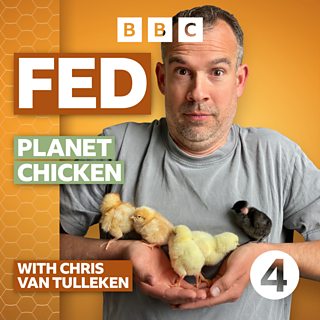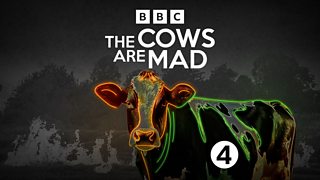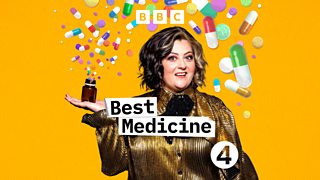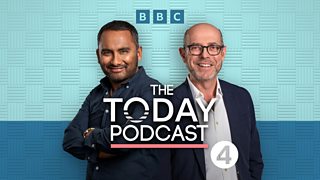Are free-range chickens the best choice for the environment?
If you find yourself standing in the supermarket aisle and weighing up what type of chicken to buy, perhaps the most ethical choice appears to be those which are free-range? But is that really the case?
In this episode of Fed with Chris van Tulleken, Chris hears how welfare concerns and environmental credentials can often pull in opposite directions.
He wants to find out whether it’s possible to raise a chicken that’s high welfare and good for the planet.
Here are some of the questions explored...
How does a modern intensive chicken farm work?
Contrary to some outdated ideas, intensive chicken farms do not cram chickens into stack upon stack of filthy cages. Farms like Peter Kendall’s in Bedfordshire are hyper modern, clean and sustainably designed with solar panels and a massive biomass boiler to recycle waste into heat for his chickens. Overall, his entire farm is between 60-80% self-sufficient.
It’s impressive considering Peter is raising around 350,000 chickens. Part of Peter’s success relies on his intensive farming strategy: Chickens on his farm are slaughtered at 4 or 5 weeks old. Due to this shorter lifespan, intensively farmed chickens are considered low welfare by activists.
But Peter feels comfortable that he’s making the right choice: “My ambition is to produce the chicken net zero… I’m trying to find a way of producing a lot of environmentally responsible food for people to consume.” Part of his success is due to his circular farm set-up. He uses chicken poo to fertilise his wheat, and this wheat then supplements the chicken feed. Even better, the straw from this wheat fuels the biomass boiler system.
How do we figure out the carbon footprint of a chicken?
Experts such as Mike Berners-Lee, a researcher at Lancaster University, have made calculating carbon footprints their forte: “When we’re looking at the footprint of a piece of food… we have to look at all the things that had to go on for that food to be produced.” Keeping the lights on, burning diesel in tractors, keeping chickens warm, making fertiliser and growing feed all contribute to carbon output.
While the calculations are complex, there are some solid takeaways from the data. Meat is always carbon-heavy when compared to plants, simply due to animals’ need to move and metabolise - no surprise that living is energetically wasteful! Chickens do fare better than their four-hooved friends however, simply because cows and sheep contribute methane to the atmosphere.
So what about high welfare versus intensively farmed chickens then? Carbon-wise the answer is clear: Intensively farmed birds have a lower carbon footprint. Their shorter life spans (around 6 weeks) means less wasted energy from developing and metabolising compared to high welfare chicken (around 13 weeks).

What’s the biggest factor affecting a chicken’s carbon footprint?
Most of the carbon waste associated with chickens is in their feed. The Feed Conversion Ratio (FCR) indicates how many kilos of feed is spent to harvest a single kilo of meat (an FCR of 5 would mean 5 kilos of feed to get 1 kilo of meat). The FCR of the average chicken is 2.6 - not bad compared to beef, which has an FCR of 6-10.
Peter has pushed this value down further however, achieving an FCR of 1.45. He does this by using a high-volume protein feed made from soya bean meal, which means less wasted weight on carbs. Of course, if it’s that simple, it begs the question…
Why doesn’t everybody use soya protein?
Soya is a double-edged sword. As a highly absorbable protein, soya allows for faster chicken growth and a lower FCR. But these incredible results also mean high demand, and non-sustainable farms in Brazil are quickly popping up to fulfil this demand.
While we need to reduce our dependency on soya, that would mean a rise in FCR. And all the extra money spent on feed ends up affecting the price of a chicken at your local supermarket - not great for the average family’s cost of living. There aren’t many viable alternatives as yet, but a growing number of companies in the UK and beyond are exploring the potential of mass-harvested insect protein for feed.
Unfortunately, it’s not just what’s going into chickens that damages the environment, but what comes out of them as well.
How are chickens polluting Britain’s rivers?
Simon Evans from the Wye and Usk Foundation has monitored the River Wye as it’s become “absolutely plastered in algae” over the last 5 years. The reason? Chicken faeces. The main culprit behind the algal blooms is an upsurge of phosphorus entering the river. A whopping 72% of this phosphorus comes from agricultural waste. Unfortunately, most of the faeces come from free-range chickens as they lack centralised hygienic sewerage systems.
How can we turn chicken pollution into a solution?
Jo Hilditch at Whittern Farms sees chicken faeces as “an incredibly valuable nutrient source”. Jo’s solution is to scoop everything out of her barns and into a hi-tech incinerator. This then heats the chicken sheds, and the leftover ash is a rich source of phosphorus that can be shipped to areas such as East Anglia that are phosphorus-poor. In a single year, Jo’s farm produces around 70,000 kilos of repurposed phosphorus. Again, however, these solutions don’t work for free-range chooks as their faeces can’t easily be collected.
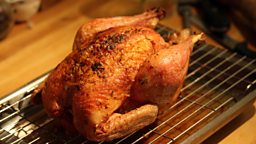
Can we have high welfare chickens that are also environmentally friendly?
Although it may seem that high welfare chickens are doomed to hurt the environment, one company in Norway claims they have the solution. Hilde Talseth is the Head of Sustainability at Norwegian chicken producer Norsk Kylling, the company responsible for 30% of Norway’s chickens. Despite such a high output, Norsk Kylling abides by the Better Chicken Commitment, an RSPCA-approved assurance that their chickens are given more natural light and slower-growing breeds are selected.
Norsk Kylling achieves this ethically conscious farming by integrating the entire supply chain. They own the breeding facilities, the hatcheries and the feed suppliers. By scaling up the farming process, all the costs are massively reduced. And, they claim, this system is replicable anywhere in the world - they want others to copy it.
How can consumers promote sustainable chicken farming?
Many of the solutions that achieve both high welfare and environmentally sustainable chickens come at a massive expense to farmers. Some would argue the only truly ethical way to mitigate this issue as consumers is also the most obvious: cut down and consume less. This may be a bridge too far for the average British household that eats two chickens per week. For now, those consumers will continue to face the ethical dilemma – eat the happiest birds, or those kindest to the planet?
Listen to Fed with Chris van Tulleken - Planet Chicken from the start of the series here...
More from 麻豆官网首页入口 Radio 4
-
![]()
The Cows Are Mad
Science has still failed to definitively answer two major questions about mad cow disease - where did it come from and how did humans get it?
-
![]()
Sliced Bread
Greg Foot investigates the so-called wonder products making bold claims. Are they the best thing since sliced bread, or marketing BS?
-
![]()
Best Medicine
Kiri Pritchard-McLean is joined by funny and fascinating comedians, doctors, scientists and historians to celebrate medicine's inspiring past, present and future.
-
![]()
The Today Podcast
Amol and Nick's take on the biggest stories of the week. With insights from behind the scenes at the UK's most influential radio news programme.
